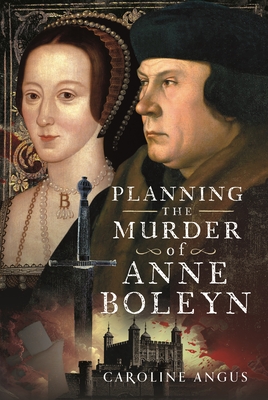Planning the Murder of Anne Boleyn

Planning the Murder of Anne Boleyn
Almost 500 years have passed since the death of Anne Boleyn, and yet, there has never been a suggestion she was guilty of the crimes which saw her executed. Attempts to muddy Anne's reputation throughout history have not lessened her popularity nor convinced anyone she was an adulterer. But many myths surrounding Anne's conviction for sleeping with George Boleyn, Henry Norris, Francis Weston, William Brereton, and Mark Smeaton have cropped up due to centuries of lies, slander, and misinformation from detractors.
One month after Anne was executed, the Convocation of Canterbury ratified the paperwork detailing her arrest, conviction, execution, and the annulment of the marriage between King Henry VIII and his second wife. As parliament had already ruled Anne's only child, Princess Elizabeth, was no longer heir to the throne, all the paperwork surrounding the trial was destroyed. No trace of her charges, witness statements, evidence, or even Archbishop Thomas Cranmer's reasoning for annulling the royal marriage survived the mass destruction. Everyone was supposed to forget Anne Boleyn and accept Queen Jane.
But why did Anne Boleyn ever need to die? King Henry had started little more than an infatuation with Jane Seymour in December 1535. Yet, many saw the opportunity to pounce, not to reduce Anne's influence but to increase Princess Mary's standing. As Vicegerent Thomas Cromwell and Ambassador Eustace Chapuys whispered of alliances in secret meetings, the Catholic nobility and the White Roses began to hatch their plan to restore the king's daughter, Princess Mary, to her rightful place at court. Just as Katharine of Aragon died, Anne Boleyn felt secure as England's queen, only to find that her adversary's death would soon bring on her own.
Why did political and religious enemies of Thomas Cromwell seek him in the months leading to Anne's death, expecting his co-operation to restore Princess Mary? Did Jane Seymour have any significance and why did King Henry and Thomas Cromwell get into a public shouting match at a dinner party? The answers lie not in what evidence remains of court life in early 1536 but in the gaps left behind. None of the characters that played a role in Anne Boleyn's death were strangers; all had connections, alliances and opportunities, and when their pasts and futures are
PRP: 216.69 Lei
Acesta este Pretul Recomandat de Producator. Pretul de vanzare al produsului este afisat mai jos.
195.02Lei
195.02Lei
216.69 LeiLivrare in 2-4 saptamani
Descrierea produsului
Almost 500 years have passed since the death of Anne Boleyn, and yet, there has never been a suggestion she was guilty of the crimes which saw her executed. Attempts to muddy Anne's reputation throughout history have not lessened her popularity nor convinced anyone she was an adulterer. But many myths surrounding Anne's conviction for sleeping with George Boleyn, Henry Norris, Francis Weston, William Brereton, and Mark Smeaton have cropped up due to centuries of lies, slander, and misinformation from detractors.
One month after Anne was executed, the Convocation of Canterbury ratified the paperwork detailing her arrest, conviction, execution, and the annulment of the marriage between King Henry VIII and his second wife. As parliament had already ruled Anne's only child, Princess Elizabeth, was no longer heir to the throne, all the paperwork surrounding the trial was destroyed. No trace of her charges, witness statements, evidence, or even Archbishop Thomas Cranmer's reasoning for annulling the royal marriage survived the mass destruction. Everyone was supposed to forget Anne Boleyn and accept Queen Jane.
But why did Anne Boleyn ever need to die? King Henry had started little more than an infatuation with Jane Seymour in December 1535. Yet, many saw the opportunity to pounce, not to reduce Anne's influence but to increase Princess Mary's standing. As Vicegerent Thomas Cromwell and Ambassador Eustace Chapuys whispered of alliances in secret meetings, the Catholic nobility and the White Roses began to hatch their plan to restore the king's daughter, Princess Mary, to her rightful place at court. Just as Katharine of Aragon died, Anne Boleyn felt secure as England's queen, only to find that her adversary's death would soon bring on her own.
Why did political and religious enemies of Thomas Cromwell seek him in the months leading to Anne's death, expecting his co-operation to restore Princess Mary? Did Jane Seymour have any significance and why did King Henry and Thomas Cromwell get into a public shouting match at a dinner party? The answers lie not in what evidence remains of court life in early 1536 but in the gaps left behind. None of the characters that played a role in Anne Boleyn's death were strangers; all had connections, alliances and opportunities, and when their pasts and futures are
Detaliile produsului









